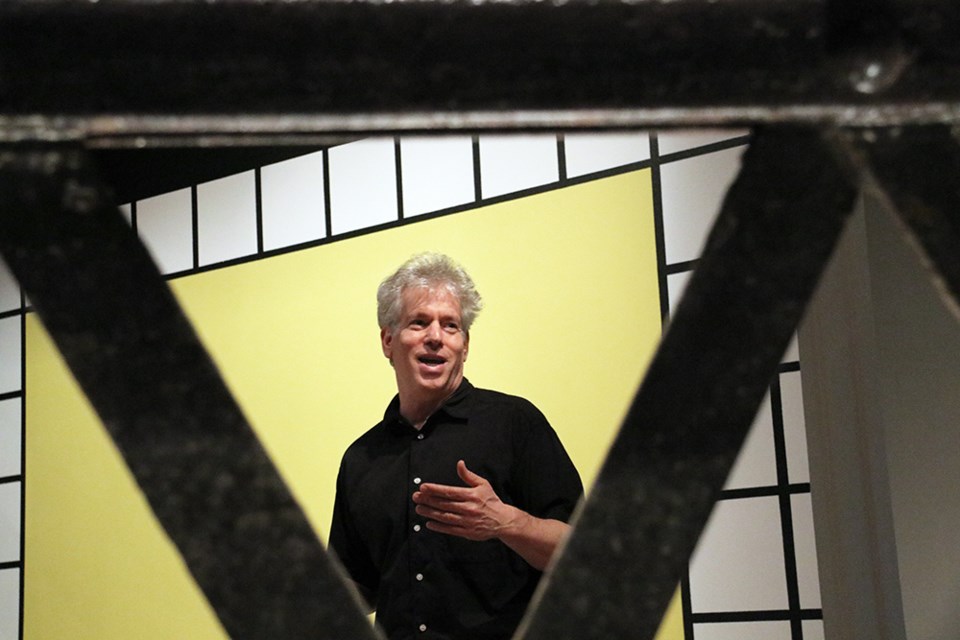Two sides to every story, right?
Wrong. Things are never that black and white. That’s made patently clear in Unbelievable, a new Museum of Vancouver exhibition that explores the many stories that surround us and create our culture and community.
The museum took a deep dive through its vaults for exhibits that range from the mysterious (a child’s coat made of cat fur) to the bizarre (a chair made of cattle horns) to the iconic (the original Stanley Park totem).
If that sounds like a scattershot selection, it’s not to do with the fact that the exhibition was hastily assembled – though three to four months is a short span for such a show to come together.
It’s more to do with the symbolic value of these items, the tales they summon, and those tales’ basis in fact – or otherwise, says Greg Dreicer, the museum’s director of curatorial and engagement.
“Symbols are a container for stories and something we put our stories into. It’s almost like a personified story,” he says.
Canada 150, 150+, or 145?
Dreicer says Unbelievable is very much an exhibition of its time, which partly explains its relatively quick birth. It was inspired by the so-called “post-truth” era we recently entered, spurred by the internet empowering individuals, for better or for worse.
The imminent anniversary of Confederation was also an influence, with its varying time scales: Canada 150, Vancouver’s conciliatory Canada 150+, and the fact, as Dreicer points out, that it’s only 145 years since BC became part of the country.
“So, it’s a time to explore what we – whoever ‘we’ is – think about Canada and BC and the stories we’re telling about it,” he says.
“Canada was formed over many years,” he adds. “People have this idea of nations being this real unchanging thing.
“We show a bunch of maps in one section, to show that when you map something it’s not just about the place, it’s about the time, and also about the future. When this area was first mapped by [Capt. George] Vancouver, it was like they were saying, ‘We’re going to take this.’”
Totem's storied history
The history between colonists and First Nations resonates powerfully in many of the stories these exhibits tell; most notably in the original totem pole that stood in Stanley Park. (The one that millions of tourists photograph every year? It’s a fibreglass replica.)
There’s an unsettling piece of symbolism here in how First Nations culture has been appropriated and recast. While the culture was suppressed, pieces of its iconography were cherry-picked and used to promote the new, colonial culture. The totem appears in the City of Vancouver coat of arms to this day.
What’s more, the totem isn’t even Coast Salish in design; it was originally commissioned for a Kwakwa̱ka̱’wakw chief in Alert Bay around the turn of the 20th century. It also appeared in the dubious 1914 documentary movie In the Land of the Headhunters.
Many other exhibits in Unbelievable reveal stories within stories in the same way. As if mimicking these many-faceted artifacts, the exhibition’s walls are dotted with mirrors and shiny surfaces that reflect and distort what’s on display.
Other well known Vancouver symbols making an appearance include the illuminated red ‘R’ that sat atop the Ridge Theatre (again, replaced by a modern version today) and a full-scale bronze-cast model of Stanley Park’s Girl in a Wet Suit, in itself a cheeky copy of Copenhagen’s Little Mermaid. Its presence in the museum’s collection is a mystery.
There’s also a copy of the plaque embedded underneath the statue of Gassy Jack in Gastown, which claims that Vancouver was named by pioneers on that very spot – a complete falsehood, says Dreicer, who adds that the statue had changed location several times as well.
The role of media and museums
Occupying a central position in the room is a printing press dating back to around 1880, originally used by the local Daily Advertiser. It points to the troubling prevalence of “alternative facts” that has led to distrust in the traditional distributors of facts.
The stillness of the old press, which once gave physical form to thousands of stories, is almost unnerving. Dreicer says he hopes it will make people think about the crisis in local journalism and where our facts come from.
This also turns the lens back on to the museum itself and its responsibility toward the truth.
“Part of this exhibition is getting people to think about museums too,” Dreicer says. “… I think museums have a super-important role to play in telling stories and engaging people in their stories and helping people create stories together.”
That is what creates community – a word that may not be as cosy as we regard it, Dreicer says.
“Stories include people or exclude them. It’s the same with community. This idea of community, people think it’s inclusion but it’s also automatically exclusion.
“The stories we believe, that’s what determines our community. The role of museums is to help people explore what their community is, who’s left in and who’s left out.
“There are a lot of unbelievable things of all kinds around that.”
Unbelievable opens on Saturday, June 24 and runs through Sept. 24 at the Museum of Vancouver.


